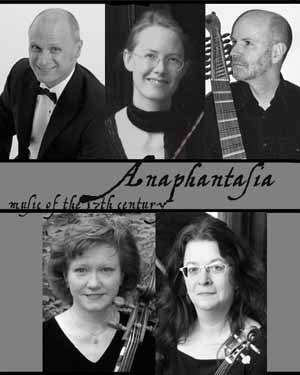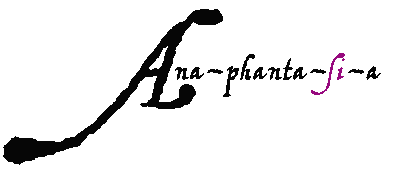
|
 Transalpina Program Notes Italian style crosses the Alps The decisive turning point for music at the Austrian imperial court came in 1619 with the coronation of Ferdinand II as Holy Roman Emperor. Ferdinand dismissed nearly all of the musicians, replacing them with the thoroughly Italianized Kapelle from his court at Graz. His reign ushered in a century of Italian dominance of musical and cultural life in Vienna. Under his Kapellmeister Giovanni Priuli and Giovanni Valentini, Ferdinand II's musicians cultivated a large repertory of both sacred and secular works. Contrary to accounts in earlier literature, Ferdinand II did not dissolve his Kapelle during the Thirty Years War, but increased its size during his reign. The preference for modern, Italianate music intensified under Ferdinand III (1637–57), who was himself a poet and composer. Artistic contacts with Italy were reinforced by the emperor's stepmother, Eleonora Gonzaga (the second wife of Ferdinand II), and his own subsequent marriage to another Gonzaga princess named Eleonora in 1651. Both of these empresses maintained their own Kapellen after their husband's deaths. Under Leopold I (1658–1705), also a gifted composer, the predilection for Italian composers continued, though German-speaking musicians, including Johann Heinrich Schmelzer and Johann Caspar Kerll, also came to prominence, particularly for instrumental composition. Born in Verona, where he also received his musical training, Antonio Bertali enjoyed a reputation as an excellent violinist, being called ‘valoroso nel violino’, as well as a long career at the Viennese court. An imperial resolution of 1666 refers to his 42 years’ service. Bertali gained enough admiration as a composer to be entrusted with the composition of music for special occasions at court, such as the marriage of Ferdinand III in 1631. Following closely after his death were two publications of his instrumental music, in 1671 and 1672. The piece which represents him on this program has come down to us only in manuscript. It is not known when Johann Heinrich Schmelzer arrived in Vienna, or who gave him his musical training, but it is possible that he studied with Antonio Bertali, who was at that time in the service of the imperial court. The earliest documentary evidence, in 1643, describes him as a cornettist at the Stephansdom. An imperial resolution of 1674, however, indicates that he began service as early as 1635-6, probably as a violinist, the capacity in which he enjoyed his greatest fame throughout his life. Schmelzer’s two sides are represented here: the Lamento sopra la morte di Ferdinand III reflects Italian influence, whereas the light-footed Sonata “Lanterly” is composed of variations on an Austrian folk melody. Johann Caspar Kerll was composing by 1641 and studied with Giovanni Valentini in Vienna in the 1640s. From 1647 to 1656 he was organist at the Brussels court of Archduke Leopold Wilhelm, who sent him to Rome to study with Carissimi in the late 1640s and early 50s, where he must have been acquainted with Froberger, who was a pupil of Frescobaldi. Kerll’s keyboard music continues the traditions established by Frescobaldi. The Capriccio sopra il cucu was evidently modelled on Frescobaldi’s Capriccio sopra il cucho. Emperor Leopold I granted him a pension in 1675, and in 1677 he became one of Leopold’s court organists. Johann Rosenmüller was employed as a trombonist at San Marco, Venice, in early 1658 and by 1660 had established himself as a composer there; an emissary from the court at Weimar obtained some compositions from him there that year. Johann Philipp Krieger studied composition with him in Venice about 1673–4; Rosenmüller also held the post of composer at the Ospedale della Pietà from 1678 until July 1682. Towards the end of his life he returned to Germany as Kapellmeister of the court at Wolfenbüttel. Italian influence, particularly that of Legrenzi and Cavalli, is clear in Rosenmüller’s last two collections. By 1670 at the latest, Giovanni Legrenzi was living in Venice, where he began to hold posts in numerous religious institutions, always, it seems, with an eye on attaining a position in one of the major churches in northern Italy. On 30 April 1676 Legrenzi made his first attempt at becoming maestro di cappella of San Marco, as successor to Cavalli. He lost by one vote to Natale Monferrato, for long the vice maestro and Legrenzi’s superior. Given the closeness of the vote it is odd that he did not compete two weeks later for the vacant post of vice maestro, since it was this post that he sought and obtained on 5 January 1681, succeeding Antonio Sartorio; he was sole candidate and was elected unanimously. Several of Legrenzi’s dramatic works had first performances in the imperial chapel in Vienna. |